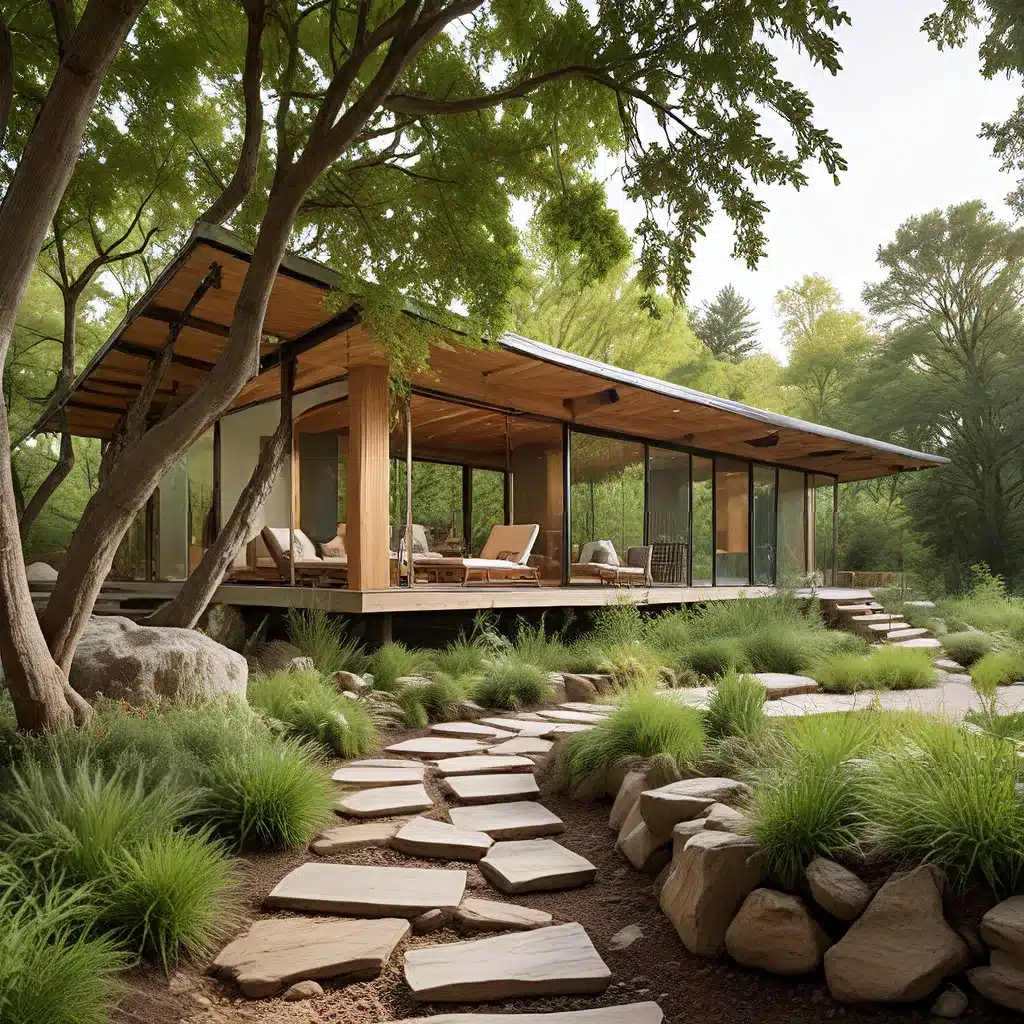
As homeowners increasingly prioritize sustainability and environmental consciousness, the demand for eco-friendly interior design has surged. The pursuit of crafting inviting and practical living areas that seamlessly blend with nature has become a top priority for design enthusiasts and professionals alike. This heightened awareness signifies a shift towards the belief that chic living can coexist with environmental stewardship, offering a roadmap for fashioning sustainable homes that are both visually appealing and ecologically responsible.
Embracing Sustainable Materials
At the core of eco-friendly interior design lies the utilization of sustainable materials that mitigate environmental impact and advocate responsible resource utilization. Opting for materials like reclaimed wood, bamboo, cork, and recycled glass not only diminishes the demand for virgin resources but also infuses distinctive character and texture into interior spaces. Moreover, choosing low-VOC (volatile organic compound) paints and finishes ensures that indoor air quality remains optimal for occupants while reducing harmful emissions into the atmosphere.
When it comes to furnishings and decor, investing in high-quality, well-crafted pieces that endure over time is crucial. This not only diminishes waste but also minimizes the necessity for frequent replacements, aligning with the principles of sustainability. Prioritizing timeless design elements and versatile furnishings empowers homeowners to adapt their spaces to evolving needs and preferences, thereby reducing the environmental impact associated with disposable consumerism.
Optimizing Energy Efficiency
Energy efficiency stands as another vital facet of eco-friendly interior design, aiding in the reduction of energy consumption, utility costs, and greenhouse gas emissions. Integrating energy-efficient lighting fixtures such as LED bulbs and harnessing natural light through strategically positioned windows and skylights can significantly curtail electricity usage. Additionally, investing in energy-efficient appliances and HVAC systems optimizes energy performance and elevates overall comfort levels within the home.
By embracing these energy-saving strategies, homeowners can not only reduce their environmental footprint but also enjoy the financial benefits of lowered utility bills and enhanced home value. Urban Grace Interiors Inc., a leading interior design firm, specializes in helping clients craft sustainable sanctuaries that seamlessly blend style and environmental consciousness.
Fostering Healthy Indoor Environments
Indoor air quality plays a pivotal role in shaping healthy and sustainable living environments. To foster indoor air quality, eco-friendly interior design methods emphasize adequate ventilation, the use of non-toxic materials, and the inclusion of indoor plants to purify the air. Opting for natural, breathable fabrics for upholstery and furnishings also reduces the presence of airborne toxins and allergens, fostering a healthier indoor environment for inhabitants.
Biophilic design, which endeavors to forge connections between people and nature through design elements and principles, serves as a fundamental component of eco-friendly interior design. Infusing biophilic elements such as indoor plants, natural materials, and views of nature aids in stress reduction, enhances mental well-being, and boosts productivity. Furthermore, biophilic design nurtures a sense of affinity towards the natural world, prompting sustainable behaviors and a deeper reverence for the environment.
Designing for Longevity and Adaptability
In the spirit of sustainability, eco-friendly interior design prioritizes durability and longevity in furnishings and materials. Opting for high-quality, well-crafted pieces that endure over time not only diminishes waste but also minimizes the necessity for frequent replacements. Investing in timeless design elements and versatile furnishings empowers homeowners to adapt their spaces to evolving needs and preferences, thereby reducing the environmental impact associated with disposable consumerism.
When embarking on the journey of crafting sustainable interior designs, it’s imperative to embrace a forward-thinking mindset that ensures endurance and resilience. Your eco-conscious home design ought to withstand the test of time and daily usage without compromising its allure. Prioritize sustainability by favoring high-quality simplicity over passing trends when selecting the foundational elements of your home’s interior.
Partnering with Eco-Friendly Design Experts
Fortunately, advancements in technology combined with a thriving interior design sector facilitate the creation of homes that are both visually stunning and ecologically responsible. By partnering with skilled interior design firms like Urban Grace Interiors Inc., homeowners can transform their living spaces into sanctuaries of elegance and eco-friendliness.
These design professionals possess the expertise and knowledge to guide homeowners through the process of crafting sustainable interiors. From material selection and energy-efficient solutions to biophilic design principles and long-lasting furnishings, eco-friendly interior designers can help create personalized spaces that align with their clients’ values and environmental priorities.
Embracing the Future of Sustainable Living
Eco-friendly interior design offers a roadmap to fashioning sustainable homes that are both visually appealing and environmentally aware. By embracing sustainable materials, energy-efficient systems, and biophilic design principles, homeowners can diminish their ecological footprint while promoting health, well-being, and a connection to nature within their living spaces.
As we strive towards a more sustainable future, eco-friendly interior design serves as a guiding light, illustrating that elegant, functional, and environmentally responsible homes are well within our reach. By prioritizing sustainability and partnering with knowledgeable design experts, homeowners can craft Sustainable Sanctuaries that not only nourish the soul but also protect the planet.

